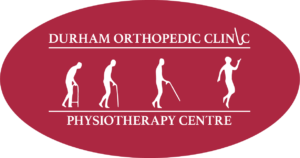Overuse injuries are common among athletes, fitness enthusiasts, and individuals who engage in repetitive movements in their daily activities. Unlike acute injuries that result from sudden trauma, overuse injuries develop gradually over time due to repetitive stress on the same muscles, joints, or tendons. Recognizing the signs of overuse injuries is crucial for early intervention and prevention of further damage.
Signs of Overuse Injuries:
Persistent Pain
One of the primary indicators of an overuse injury is persistent pain that develops gradually and worsens over time. This pain is often described as dull or achy and may be localized to a specific area such as the knee, shoulder, or wrist. Ignoring this pain can lead to further damage and prolonged recovery.
Swelling and Inflammation
Inflammation is the body’s natural response to injury, and overuse injuries can cause localized swelling in the affected area. Swelling may be accompanied by warmth, redness, and tenderness. If you notice swelling that persists despite rest and icing, it could be a sign of an overuse injury.
Decreased Range of Motion
Overuse injuries can also lead to a decreased range of motion in the affected joint or muscle. You may notice stiffness, tightness, or difficulty moving the affected area through its full range of motion. This can impact your performance in physical activities and may indicate underlying tissue damage.
Changes in Movement Patterns
As overuse injuries progress, they can alter your movement patterns and biomechanics. You may compensate for pain or weakness by modifying your gait, posture, or technique, which can place additional stress on other parts of the body. These compensatory movements can contribute to further injury and should be addressed promptly.
Addressing Overuse Injuries
Rest and Recovery
The first step in addressing an overuse injury is to rest and allow the affected tissues to heal. This may involve temporarily avoiding activities that exacerbate pain and inflammation. Incorporating rest days into your exercise routine and prioritizing adequate sleep can facilitate the healing process.
Ice and Compression
Applying ice packs and using compression bandages can help reduce swelling and inflammation associated with overuse injuries. Cold therapy constricts blood vessels and numbs the affected area, providing pain relief and promoting recovery. Be sure to wrap ice packs in a cloth to avoid direct contact with the skin and limit icing sessions to 15-20 minutes at a time.
Physical Therapy
Physical therapy is a valuable resource for addressing overuse injuries and restoring mobility, strength, and flexibility. A skilled physical therapist can develop a personalized treatment plan tailored to your specific needs, incorporating exercises, stretches, manual therapy techniques, and modalities such as ultrasound or electrical stimulation.
Modification of Activities
In some cases, modifying or temporarily avoiding activities that aggravate the overuse injury may be necessary to prevent further damage. This may involve cross-training with low-impact exercises, modifying technique or equipment, or adjusting training intensity and frequency. A gradual return to activity should be guided by symptom resolution and progression of rehabilitation exercises.
Recognizing the signs of overuse injuries and taking proactive steps to address them is essential for preventing further damage and facilitating recovery. If you experience persistent pain, swelling, decreased range of motion, or changes in movement patterns, seek evaluation and treatment from a qualified healthcare professional. By prioritizing rest, implementing appropriate interventions, and modifying activities as needed, you can effectively manage overuse injuries and return to pain-free movement and performance.
Contact the professionals at the Durham Orthopedic and Sports Injury Clinic if you think you might be experiencing an overuse injury at 905-428-7800.

